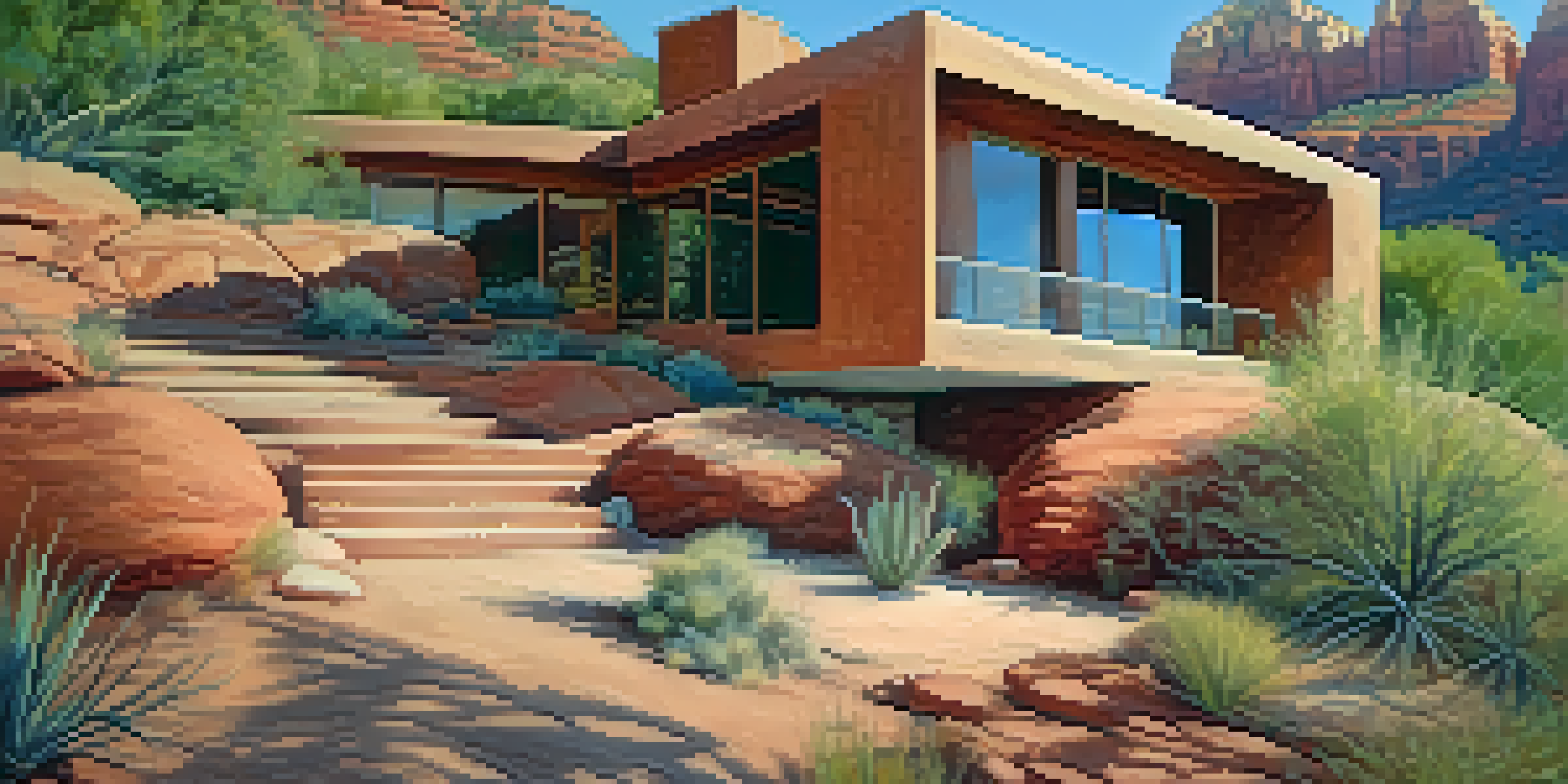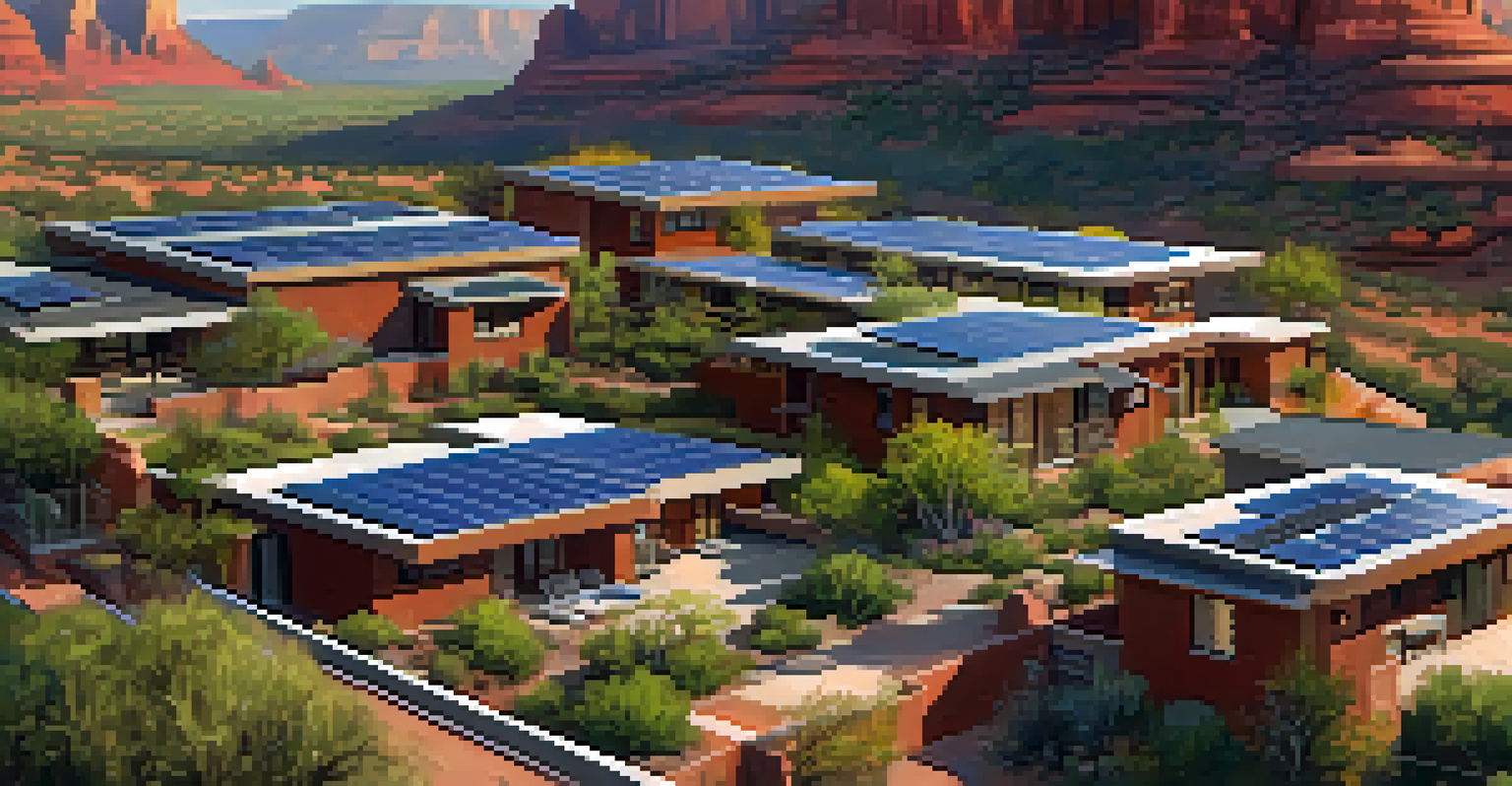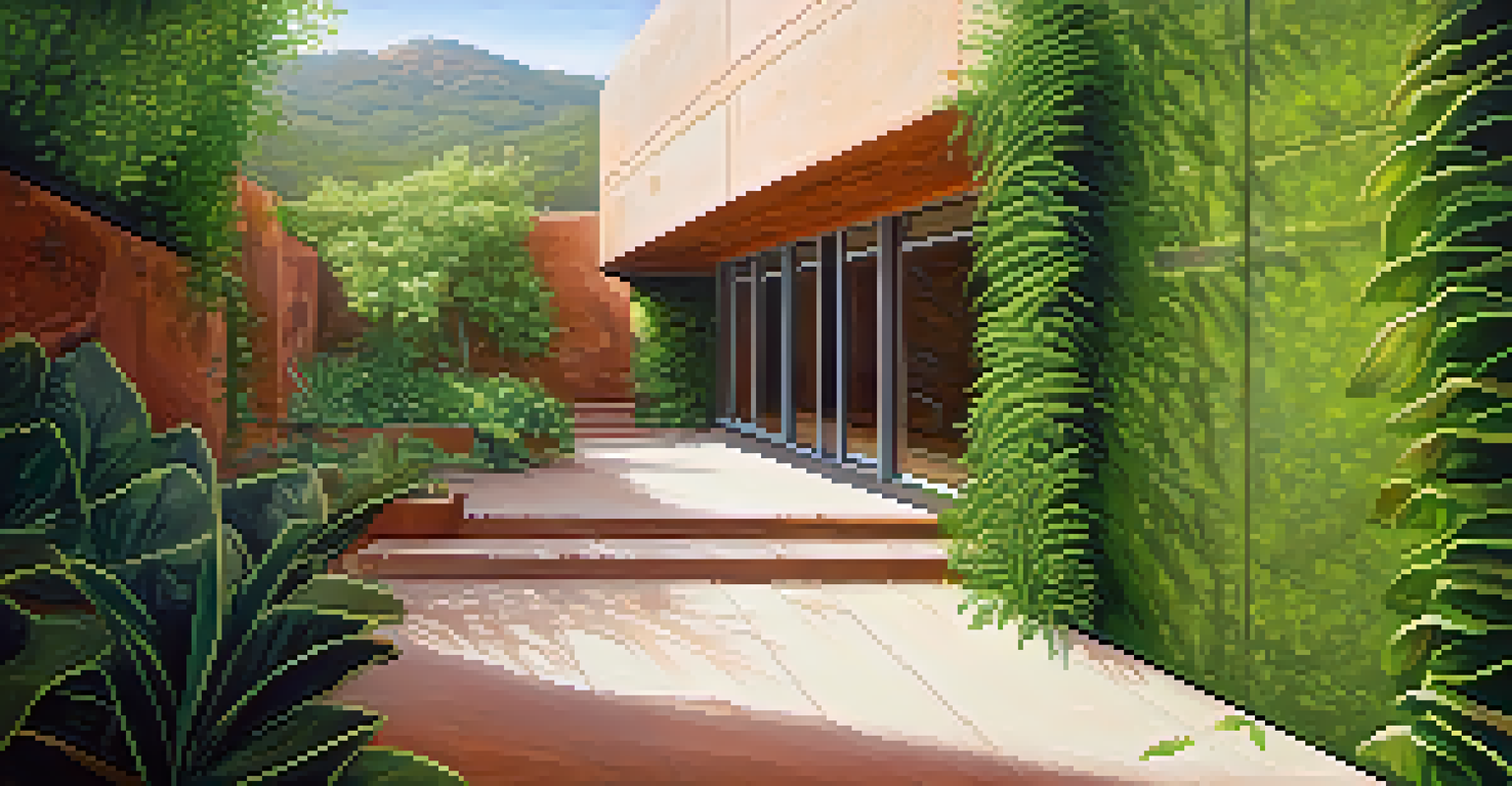Eco-Friendly Architecture: Sustainable Designs in Sedona

Understanding Eco-Friendly Architecture in Sedona
Eco-friendly architecture refers to designing buildings that minimize environmental impact. In Sedona, this concept is embraced not just as a trend, but as a necessity to protect the stunning natural landscape. The unique red rock formations and biodiversity of the area make sustainable design imperative for preserving its beauty for future generations.
The greatest threat to our planet is the belief that someone else will save it.
The focus on sustainability involves using renewable materials, energy-efficient systems, and minimizing waste in construction. Sedona architects often consider local climate and geography, ensuring that designs harmonize with the surrounding environment. This approach not only enhances aesthetic appeal but also promotes a sense of community and responsibility toward nature.
As more architects and homeowners adopt eco-friendly practices, Sedona sets an inspiring example for other regions. By prioritizing sustainable design, Sedona showcases how architecture can coexist with nature, offering a blueprint for environmentally conscious living.
Key Features of Sustainable Designs in Sedona
Sustainable designs in Sedona often incorporate natural materials like adobe, stone, and reclaimed wood. These elements not only blend seamlessly with the landscape but also provide thermal insulation, reducing energy consumption. For instance, many homes utilize passive solar design, strategically placing windows to capture sunlight and warmth during winter months.

Green roofs and walls are also popular features that enhance energy efficiency while promoting biodiversity. These living elements not only absorb rainwater but also provide habitats for local wildlife, contributing to the ecological balance. In addition, they help to reduce the urban heat island effect, making neighborhoods cooler.
Sustainable Design is Essential
Eco-friendly architecture in Sedona is vital for preserving its unique natural landscape and biodiversity.
Rainwater harvesting systems are another hallmark of Sedona’s eco-friendly architecture. By capturing and reusing rainwater, residents can significantly lower their water usage, which is crucial in arid climates like Sedona. This sustainable practice reflects a growing awareness of resource conservation, aligning daily living with ecological responsibility.
The Role of Local Materials in Architecture
Local materials play a vital role in the sustainable architecture of Sedona. By sourcing materials nearby, architects reduce transportation emissions and support the local economy. This practice not only emphasizes sustainability but also fosters a sense of place, as buildings showcase the region's unique geological features.
Sustainability is not just about the environment; it's about our entire economy and society.
Additionally, using local materials helps to create structures that are better suited to the local climate. For example, Sedona's warm, dry conditions make adobe and stone particularly effective for thermal mass, keeping interiors cool in summer and warm in winter. This thoughtful application of materials enhances energy efficiency and comfort for residents.
Beyond functionality, local materials also contribute to the aesthetic appeal of buildings. Homes made from Sedona's distinctive red rock blend beautifully with the surrounding landscape, creating a harmonious connection between architecture and nature. This visual unity reinforces the community's commitment to preserving the area's natural beauty.
Innovative Technologies in Sustainable Architecture
Innovative technologies are at the forefront of sustainable architecture in Sedona, enhancing energy efficiency and reducing environmental impact. For example, many homes now feature solar panels, which harness the abundant Arizona sun to generate clean energy. This technology not only lowers utility bills but also contributes to a significant reduction in carbon footprint.
Smart home technologies are also becoming increasingly popular, allowing residents to monitor and control energy usage remotely. With features like programmable thermostats and energy-efficient lighting, homeowners can optimize their energy consumption. These advancements empower individuals to make informed choices that positively impact the environment.
Local Materials Enhance Sustainability
Using local materials not only reduces transportation emissions but also creates structures that blend harmoniously with the environment.
Moreover, the integration of sustainable technologies extends beyond individual homes. Community initiatives in Sedona promote the use of electric vehicle charging stations and energy-efficient public transportation. By embracing these innovations, Sedona is paving the way for a greener future and encouraging sustainable living among its residents.
Community Involvement in Sustainable Practices
Community involvement is crucial for the success of sustainable architecture in Sedona. Local organizations and residents often collaborate on initiatives aimed at promoting eco-friendly building practices. These efforts include workshops, educational programs, and community events that raise awareness about the importance of sustainability.
For instance, many residents participate in community clean-up days, where they help preserve Sedona's natural beauty while learning about environmental conservation. Such activities foster a strong sense of community and shared responsibility, reinforcing the idea that everyone plays a role in protecting the environment.
Additionally, local government policies support sustainable development by incentivizing green building practices. By offering tax rebates and grants for eco-friendly projects, Sedona encourages homeowners and builders to prioritize sustainability. This collaborative approach demonstrates how community engagement can drive meaningful change in architecture and urban planning.
Challenges in Implementing Eco-Friendly Designs
Despite the numerous benefits, implementing eco-friendly designs in Sedona does come with its challenges. One major hurdle is the initial cost associated with sustainable materials and technologies, which can be higher than traditional options. However, many residents find that the long-term savings on energy and maintenance often outweigh these upfront expenses.
Another challenge lies in navigating local building regulations and zoning laws. While these regulations are essential for maintaining community standards, they can sometimes hinder innovative eco-friendly designs. Advocating for more flexible policies that support sustainability is a growing focus among local leaders and architects.
Community Drives Eco-Friendly Practices
Active community involvement and local government support are key to promoting sustainable building practices in Sedona.
Lastly, there is often a gap in public knowledge about the advantages of eco-friendly architecture. Educating homeowners and builders about the benefits and possibilities of sustainable design is essential for broader adoption. By fostering a culture of sustainability, Sedona can overcome these challenges and continue to thrive as a model for eco-friendly living.
The Future of Eco-Friendly Architecture in Sedona
The future of eco-friendly architecture in Sedona looks promising as more people recognize the importance of sustainability. As awareness grows, more architects are likely to incorporate green practices into their designs, creating a ripple effect in the community. This shift can lead to a transformation of the built environment that aligns with the natural landscape.
Moreover, advancements in technology will continue to play a significant role in shaping sustainable architecture. Innovations in renewable energy, water conservation, and building materials will enable designers to create even more efficient and eco-friendly structures. This ongoing evolution will further enhance Sedona's reputation as a leader in sustainable living.

Ultimately, the commitment to eco-friendly architecture in Sedona reflects a broader movement toward environmental stewardship. As residents and visitors embrace sustainable practices, Sedona can serve as a beacon of hope, inspiring other communities to follow suit. The journey toward a sustainable future is not just a local effort—it's a collective responsibility we all share.